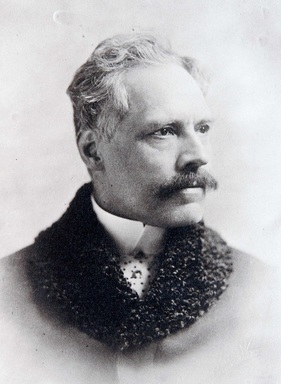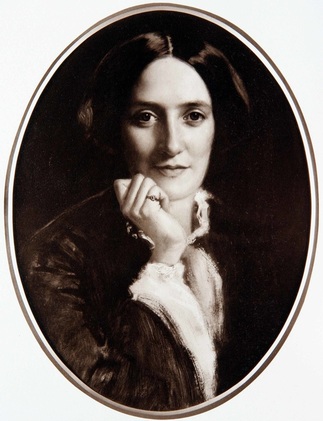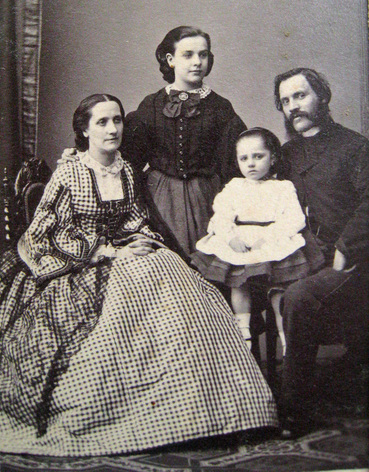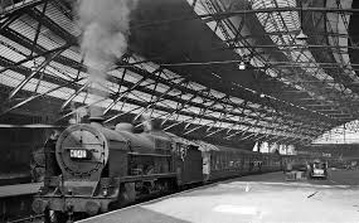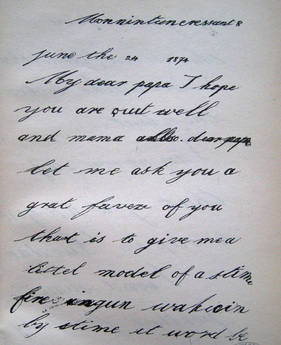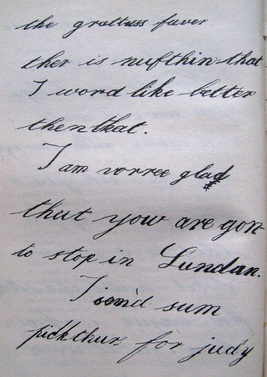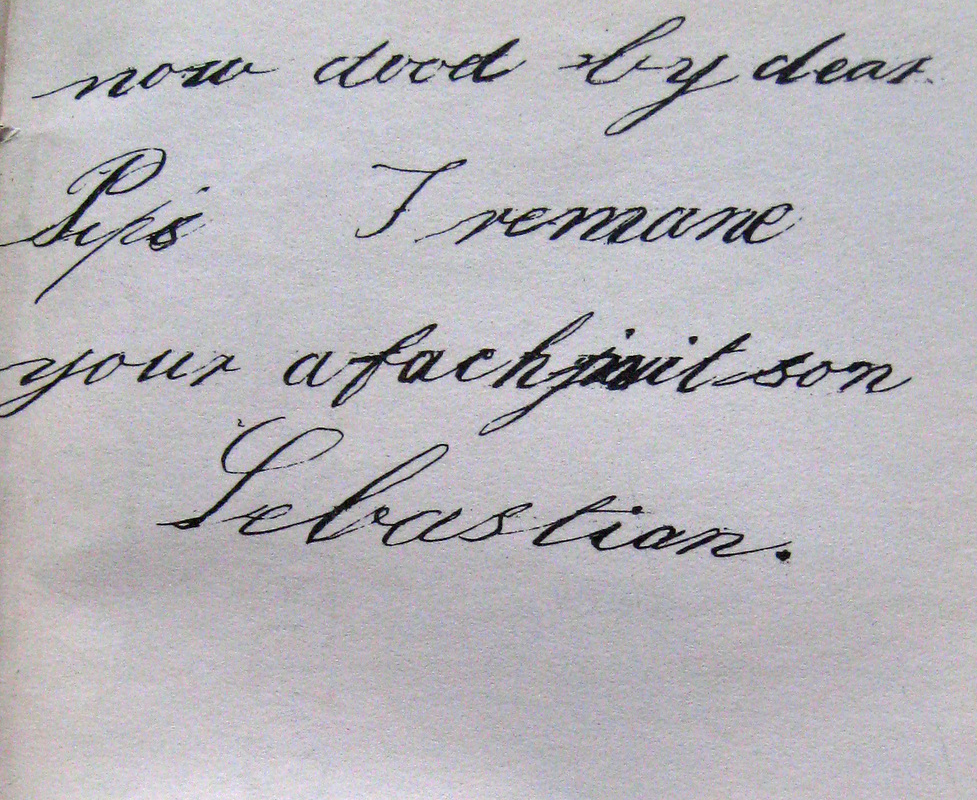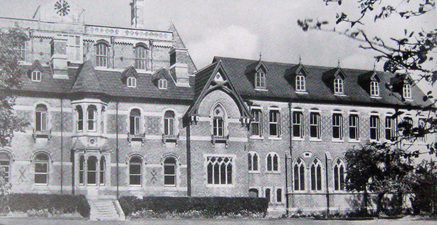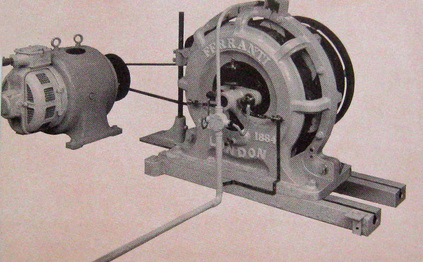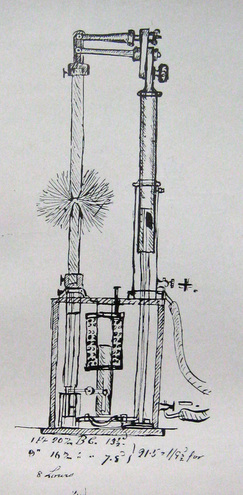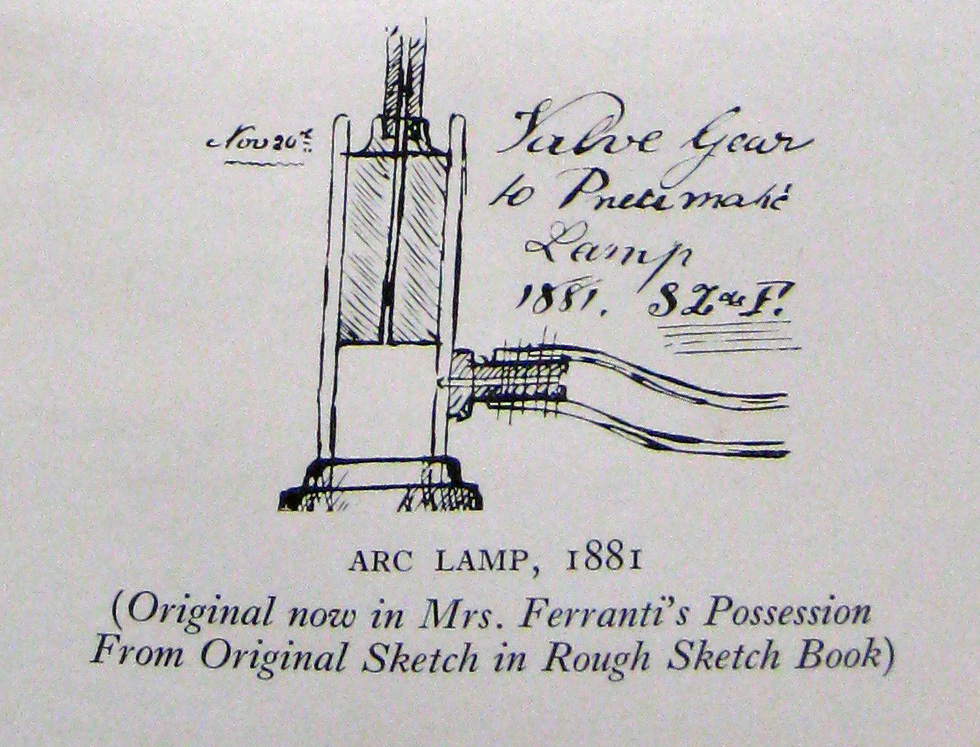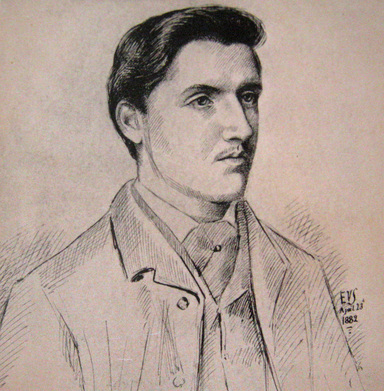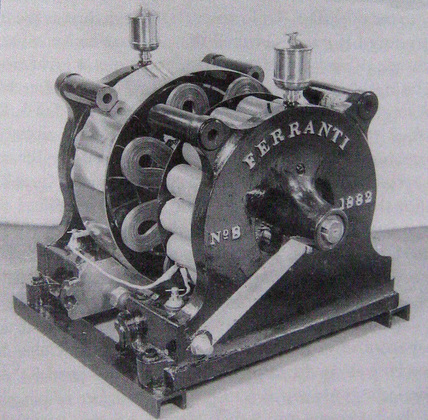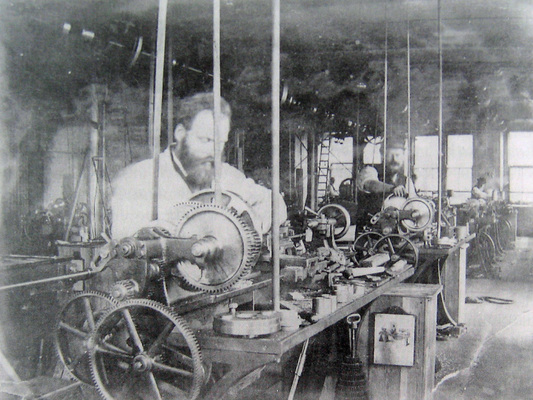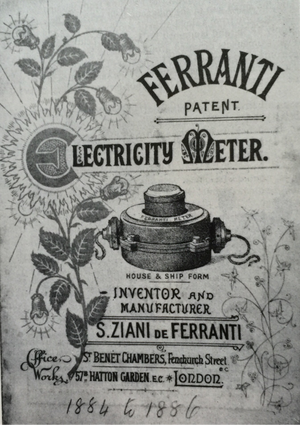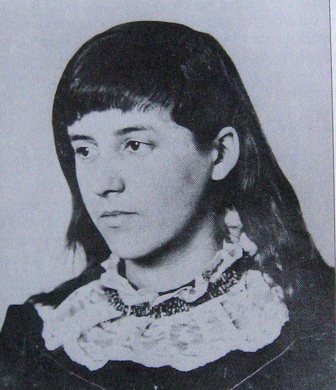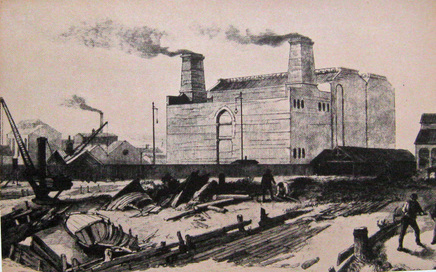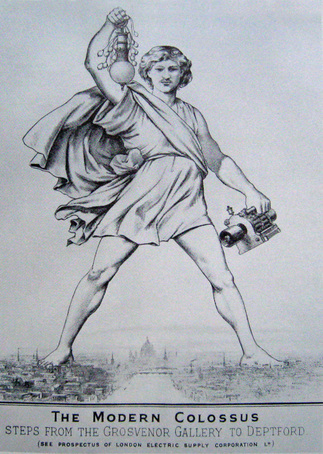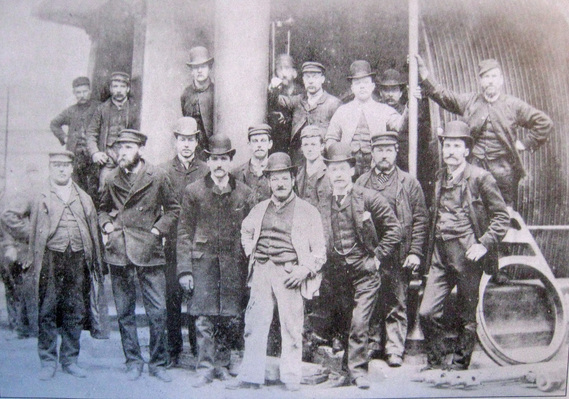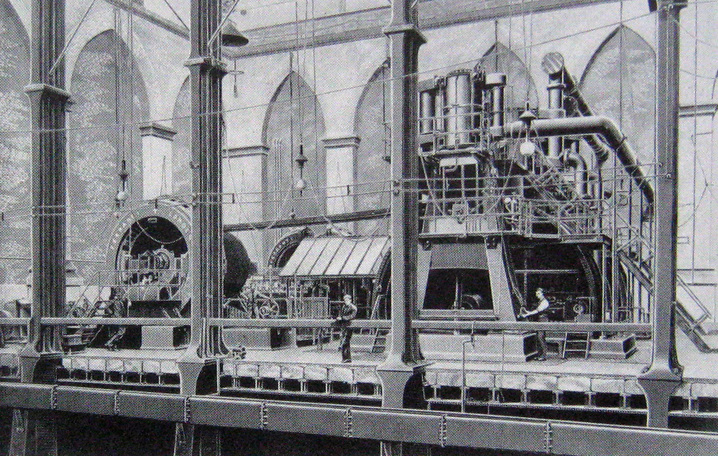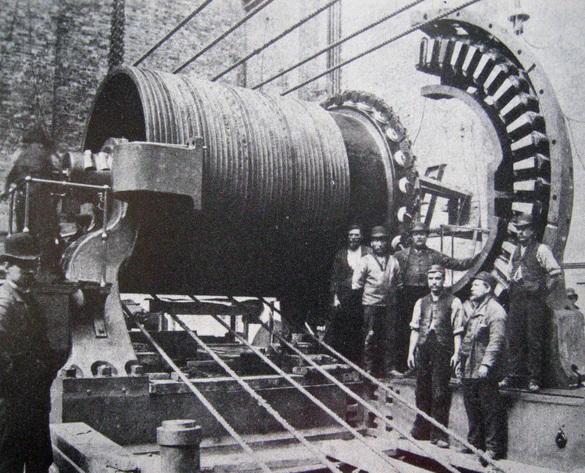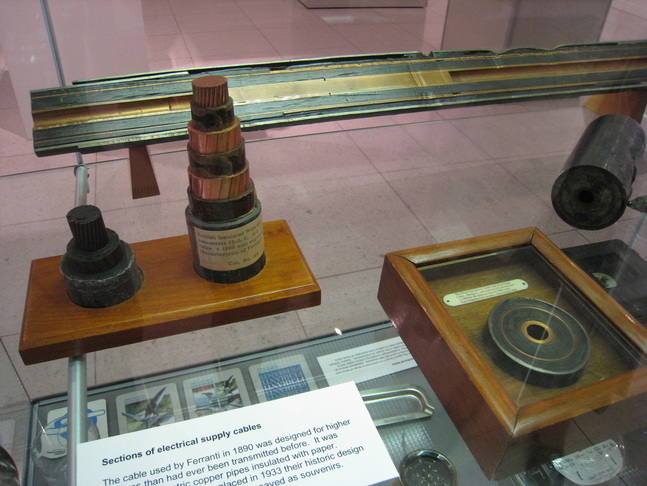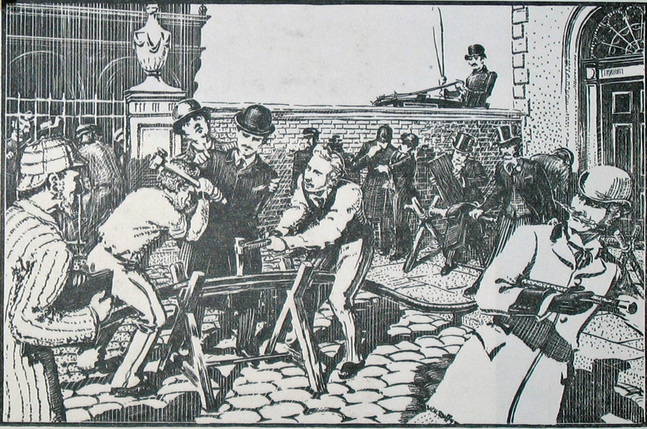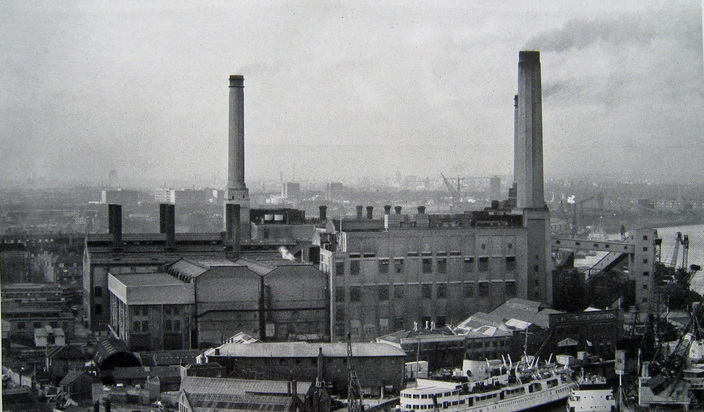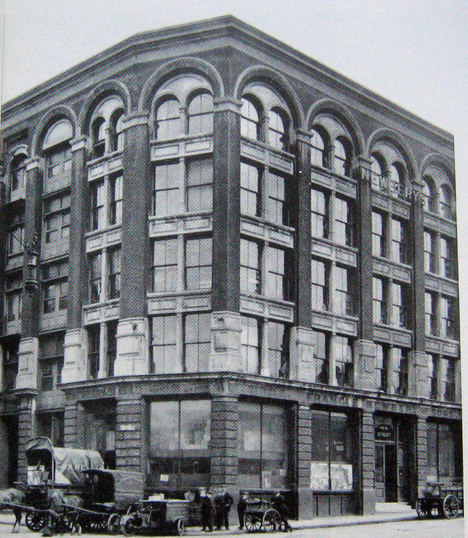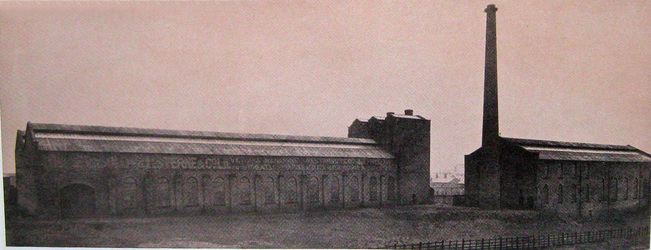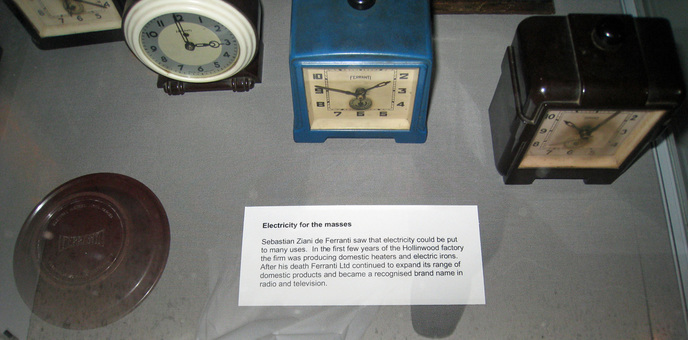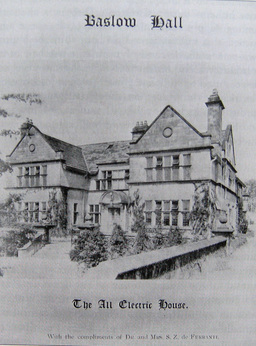Sebastian Ferranti
Life Story
His Parents
Sebastian de Ferranti was born on April 9th 1864 in Liverpool at The Havelock Building, 130 Bold Street.
|
His father was Cesar de Ferranti, an early photographer who had recently come from Belgium to take advantage of Liverpool’s reputation as 'THE place' to do business in Europe - at that time.
His ancestors came from prosperous Bologna in Northern Italy where the family name was Zani. They were wealthy men of law ( Famiglie Nobili ) who, with others, ruled Bologna under Vatican control until Napoleon invaded. The family left Italy soon after that and the name became Zani de Ferranti which over time simplified to Ferranti. |
|
His mother was Julianna Szczepanowska (nee Scott).
(Her first husband was Polish - Stanislas Szczepanowski) Julianna’s father William Scott, was an English portrait painter. He had moved from London to Liverpool, and initially helped Cesar on his way by setting up a studio with him in Sandon Terrace in Liverpool. |
|
Early family matters
Sebastian had half siblings – Wladziu, Vincent and Vanda, from his mother’s first marriage to Stanislas Szczepanowski – a Polish concert guitarist. She was a concert pianist and singer and had travelled Britain and Europe with her husband, on the concert circuit, until he abandoned her. He disappeared one winter, leaving her alone abroad with her small children, and she never heard from him again. Time went past and she met Cesar in Ostend, Belgium. It was a whirlwind romance and she became pregnant. The baby ( Juliet ) was hidden away in a convent in Belgium until she and Cesar could be married. Seven years after Szczepanowski’s disappearance, he could be and was legally proclaimed dead, making her free to marry Cesar at last. Happily married she then became pregnant with Sebastian. Juliet was brought to Liverpool, but not until after Juliana's father had died. This was Sebastian’s family. His oldest half brother Wladziu became a concert violinist, Vincent was in the merchant Navy and Vanda and Juliet were talented artists - and they all helped to look after Sebastian. |
Childhood
|
Life for Sebastian before Prep School was at home, in Liverpool (apart from a short time in Belgium to learn French). THE LIVERPOOL STORY MANWEB His favourite occupation was to go to Lime Street Station to watch the steam trains. Prep School was in London at St Stanislas School, Hampstead. After that he was sent to St Augustine’s Abbey School in Ramsgate 1877 – 1881 He attended lectures at University College London for a short time. |
Sebastian de Ferranti started inventing at a young age. From early childhood he was fascinated by machines, motors, engines and anything electrical.
At boarding school, age 10 on June 7th 1874, he wrote to his father
"I would like you to send me a model drawing of one of the engines we saw on Great North Western"
on June 24th he wrote
" let me ask you a great faver of you, that is to give me a littel model of a stime fire ingun wakeoin by stime. It word be the grattuis faver; ther is nufthin that I would like better then that" written age 10 see below
At boarding school, age 10 on June 7th 1874, he wrote to his father
"I would like you to send me a model drawing of one of the engines we saw on Great North Western"
on June 24th he wrote
" let me ask you a great faver of you, that is to give me a littel model of a stime fire ingun wakeoin by stime. It word be the grattuis faver; ther is nufthin that I would like better then that" written age 10 see below
His parents were most concerned about his poor hand writing and spelling and his mother wrote to him in 1878 when he was 14;-
"Indeed I would almost rather you should not write to Wladziu, if your letter is to be so full of wrongly spelt words as the one to Wanda. I was quite ashamed of it on that account, and very sorry Pa should see what little use you appear to make of the instruction he is paying so very much money for you to receive. There are generally some faults of spelling in all your letters, but the last to Vanda was fearfully bad. I suppose you wrote in a great hurry, and had not time to think about the words being right or wrong; still it is a great pity, because persons may be suspected of having had no education whatever if they make mistakes in spelling. The composition and wording of your letters is very excellent but that is not enough"
Dylexia
It is likely that he had dyslexia
In a small informal study done on his descendants, it was found that a large proportion of them had dyslexia, ranging from mild to severe
"Indeed I would almost rather you should not write to Wladziu, if your letter is to be so full of wrongly spelt words as the one to Wanda. I was quite ashamed of it on that account, and very sorry Pa should see what little use you appear to make of the instruction he is paying so very much money for you to receive. There are generally some faults of spelling in all your letters, but the last to Vanda was fearfully bad. I suppose you wrote in a great hurry, and had not time to think about the words being right or wrong; still it is a great pity, because persons may be suspected of having had no education whatever if they make mistakes in spelling. The composition and wording of your letters is very excellent but that is not enough"
Dylexia
It is likely that he had dyslexia
In a small informal study done on his descendants, it was found that a large proportion of them had dyslexia, ranging from mild to severe
In his writing and handwriting he seemed to his mother to be sadly backward, preferring to be read to rather than to read himself. In a mood of maternal anxiety she wrote to him from Bold Street, Liverpool in 1875 when he was 11.
“Your writing is decidedly improving but you have spelt a number of words wrong in the letter to Juliet. I suppose it is because you write in such a hurry. Your dear little head seems as full as ever of engines and boilers and such things”
No wonder his mother was puzzled, for instead of the musician or painter she had expected she had a son who wrote to her (age 12)
“ I have made a picture of a water heater and condenser combined which I have invented, so that hot water from the condenser will run into the water reservoir and then into the boiler, instead of the steam coming out of the funnel”
He was never to be much of a book reader although on arrival at senior school he had a copy of Ganot and Peppers Book of Science which he would read at any available opportunity.
“Your writing is decidedly improving but you have spelt a number of words wrong in the letter to Juliet. I suppose it is because you write in such a hurry. Your dear little head seems as full as ever of engines and boilers and such things”
No wonder his mother was puzzled, for instead of the musician or painter she had expected she had a son who wrote to her (age 12)
“ I have made a picture of a water heater and condenser combined which I have invented, so that hot water from the condenser will run into the water reservoir and then into the boiler, instead of the steam coming out of the funnel”
He was never to be much of a book reader although on arrival at senior school he had a copy of Ganot and Peppers Book of Science which he would read at any available opportunity.
|
At St. Augustine’s the headmaster quickly recognised unusual qualities in their young pupil whose mind was so set on science and, departing from regulations, assigned him a room where he could work alone with full scope for exercising his considerable ingenuity and for working out the practical problems of his budding genius.
“I felt I was right in making an exception” The headmaster wrote later “and the results proved the wisdom of the step for during those two years the small inventions and discoveries he made are too numerous to mention and I can confidently add that this freedom from the ordinary routine and the valuable use he made of the time, laid the foundation of his brilliant success as one of the most eminent electricians of the century” |
In 1877 when Sebastian was 13 his father wrote to say that he was considering having the house in Bold Street lit by electricity. Good light was all important for photography, and electricity in his studio would have been a wonderful help for his work
Sebastian wrote with enthusiasm
“What a capital idea that is of lighting the house by electricity. About what sized engine* would it take to do it? I hope very much that you will have it: not only for the beautiful white light it gives: and it seems to me that it must be cheaper, as the engine* would not cost much to work, especially if it was made to go by coke and charcoal mixed, or it might have a self-feeding boiler and lamp, which, with a very little calculation, is very easy to be made and worked with safety with comparatively no looking after, except to oil the different parts
*It would have meant having their own DC generator - dynamo (DC = Direct Current)
in 1878 the first electric lighting (arc lamps) were used in the UK when the The Thames Embankment was lit.
In 1878 the first residential electric lighting (arc lamps) in the UK were installed by Armstrong in the Picture Gallery in his house Craigside in Northumberland. Cesar de Ferranti would have been leading the field if he had gone ahead in Bold Street in 1877.
Sebastian went on to invent his own improved arc light patented in 1881
Sebastian wrote with enthusiasm
“What a capital idea that is of lighting the house by electricity. About what sized engine* would it take to do it? I hope very much that you will have it: not only for the beautiful white light it gives: and it seems to me that it must be cheaper, as the engine* would not cost much to work, especially if it was made to go by coke and charcoal mixed, or it might have a self-feeding boiler and lamp, which, with a very little calculation, is very easy to be made and worked with safety with comparatively no looking after, except to oil the different parts
*It would have meant having their own DC generator - dynamo (DC = Direct Current)
in 1878 the first electric lighting (arc lamps) were used in the UK when the The Thames Embankment was lit.
In 1878 the first residential electric lighting (arc lamps) in the UK were installed by Armstrong in the Picture Gallery in his house Craigside in Northumberland. Cesar de Ferranti would have been leading the field if he had gone ahead in Bold Street in 1877.
Sebastian went on to invent his own improved arc light patented in 1881
His Magnetic Machine - an Alternator
His famous Ferranti Alternator was patented in 1882 but the origin of it is to found in an invention he was busy with age 14 in 1878
He wrote to his father at that time
" I have thought of a magnetic machine so simple that if it worked it would, I am sure, carry all other ones before it. The reason for it being good in my opinion, is that it does away with a great deal of friction by not having cranks, connecting rods, pistons and piston rods, all of which often want repairing and take up space and are of great weight"
For his remaining years at school his letters are full of talk about this machine.
He finally finished his machine - his alternator - during the summer just after he left school ( 1881 ) at the age of 17 at the workshop of Mr Jarman and it was patented the next year
INVENTIONS AT SCHOOL
His famous Ferranti Alternator was patented in 1882 but the origin of it is to found in an invention he was busy with age 14 in 1878
He wrote to his father at that time
" I have thought of a magnetic machine so simple that if it worked it would, I am sure, carry all other ones before it. The reason for it being good in my opinion, is that it does away with a great deal of friction by not having cranks, connecting rods, pistons and piston rods, all of which often want repairing and take up space and are of great weight"
For his remaining years at school his letters are full of talk about this machine.
He finally finished his machine - his alternator - during the summer just after he left school ( 1881 ) at the age of 17 at the workshop of Mr Jarman and it was patented the next year
INVENTIONS AT SCHOOL
What is an alternator
It is the name of the machine (the generator) which makes AC electricity (AC Alternating Current) using electromagnetism
Follow the below link to learn how electricity is generated
school-for-champions_
It is the name of the machine (the generator) which makes AC electricity (AC Alternating Current) using electromagnetism
Follow the below link to learn how electricity is generated
school-for-champions_
|
Alternators
The Alternators invented by S.Z. de Ferranti when he was 17 brought his name into prominence and led to the formation of the first Ferranti Company in 1882. Ferranti alternators were made for over 20 years and installed in many power stations in Great Britain and abroad, also in ships. After 1896 they were built in Hollinwood and were usually combined with steam engine also designed by S Z De Ferranti. Steam-alternators were supplied in sizes up to 2,000 kW at voltages up to 10,000 volts |
Sebastian's science teacher at St Augustine's - Father Bergh struggled to provide the necessary teaching, and outside help was found in the form of Mr Alfred J Jarman - an electrician and dealer in electrical apparatus in Ramsgate
Arc Lamp
In 1879 - with Father Bergh's help Sebastian built crude arc lamps and connected them to a galvanic battery. In a letter to his father he says
"I have made two electric lamps, one of which I tried at Mr Jarmans and worked very well"
With the first areas in the UK being lit with electric arc lamps, just the year before, he was already thinking of improvements.
Below are his plans for an Arc Lamp 1881
Arc Lamp
In 1879 - with Father Bergh's help Sebastian built crude arc lamps and connected them to a galvanic battery. In a letter to his father he says
"I have made two electric lamps, one of which I tried at Mr Jarmans and worked very well"
With the first areas in the UK being lit with electric arc lamps, just the year before, he was already thinking of improvements.
Below are his plans for an Arc Lamp 1881
What is an Arc Lamp
An Arc Lamp is a spark or electric arc through the air between two carbon rods. It was the first form of electric light invented by Humphry Davy about 1810 but not used commercially until the 1870's
What about ordinary incandescent light bulbs?
Most people think that Thomas Edison invented the electric light bulb.
But
Edison, who patented his bulb in 1879, merely improved on a design that British inventor Joseph Swan had patented 10 years earlier. Swan sued Edison for patent infringement, and the British courts ruled against Edison
As punishment, Edison had to make Swan a partner in his electric company. Even the U.S. Patent Office decided in 1883 that Edison’s patent was invalid, as it also duplicated the work of another American inventor.
Swan's home (in Gateshead, England) was the first in the world to be lit by light bulb,
The Early Years After School
Sebastian left St Augustines College after the summer term of 1881 when he was 17.
Things were difficult for the family at this time. On July 1881 Cesar de Ferranti, his father, was declared bankrupt. A few days before that, the bailiffs had called to take possession of Cesar's belongings in Bold Street and two days later the auctioneer came to make an inventory of all their property. Poor Juliana, his mother, was obliged to watch while they went through all they had.
Cesar's Photographic business in Bold Street had been successful until it became known that he had taken a mistress. Liverpool Victorian Society was unable to tolerate this, and his customers evaporated. Juliana did what she could for the family finances, offering piano lessons, until even her beloved piano was taken away and sold.
From this point on, the children had to make their own way in the world - the family had no money.
Sebastian left St Augustines College after the summer term of 1881 when he was 17.
Things were difficult for the family at this time. On July 1881 Cesar de Ferranti, his father, was declared bankrupt. A few days before that, the bailiffs had called to take possession of Cesar's belongings in Bold Street and two days later the auctioneer came to make an inventory of all their property. Poor Juliana, his mother, was obliged to watch while they went through all they had.
Cesar's Photographic business in Bold Street had been successful until it became known that he had taken a mistress. Liverpool Victorian Society was unable to tolerate this, and his customers evaporated. Juliana did what she could for the family finances, offering piano lessons, until even her beloved piano was taken away and sold.
From this point on, the children had to make their own way in the world - the family had no money.
|
In London Sebastian got an interview with Alexander Siemans and became happily employed in the Experimental Department of The Sieman's Works at Charlton. Here, as he put it, he had "a most fortunate place which is as good for me as I was spending piles of money on experiments" He was in his element and the practical experience he gained there helped him with his own researches. In such spare that he had, he attended classes at London University |
|
His First Company Ferranti, Thompson & Ince Ltd was formed in 1882 when Sebastian was 18, Ferranti's invention of a Zigzag armature for dynamos was combined with Sir William Thomson's (Lord Kelvin's) invention of a dynamo And the machine was called the Ferranti-Thomson dynamo. It created a sensation as it gave five times the output of any previous machine of it's size (the output then being measured in terms of the number of incandescent lamps that could be lit satisfactorily and was so far ahead of its rivals that it brought Ferranti into a position of considerable repute: It also brought him into friendly relationship with the future Lord Kelvin who held the young man in high esteem and corresponded with him over a long period. A small factory was started at Appold Street, Finsbury and here in addition to several types of dynamo, Ferranti made the 1st electrolytic meter, of alternating current type, with measurements of the gas collected at the 2 electrodes. |
What is a Dynamo
A dynamo is the name of the machine which makes DC electricity (Direct current) using electromagnetism.
To learn more
What is an armature
An armature is the rotating coil or coils of a dynamo or electric motor
A dynamo is the name of the machine which makes DC electricity (Direct current) using electromagnetism.
To learn more
What is an armature
An armature is the rotating coil or coils of a dynamo or electric motor
The Battle of The Systems AC v DC
There are two systems of Electricity - Alternating Current and Direct Current AC and DC
Most people thought that DC was the system to use and develop
Sebastian de Ferranti thought otherwise
He could clearly see that AC was the system that was going to provide the answers and fulfill the needs required for the distribution of electricity to the homes of everyone
America (with Edison) was slightly ahead of the UK but going firmly down the DC route
The battle raged in 1882 when both AC and DC camps competed by decrying each others technology and again with more fierce criticism in a dying salvo in 1888.
There are two systems of Electricity - Alternating Current and Direct Current AC and DC
Most people thought that DC was the system to use and develop
Sebastian de Ferranti thought otherwise
He could clearly see that AC was the system that was going to provide the answers and fulfill the needs required for the distribution of electricity to the homes of everyone
America (with Edison) was slightly ahead of the UK but going firmly down the DC route
The battle raged in 1882 when both AC and DC camps competed by decrying each others technology and again with more fierce criticism in a dying salvo in 1888.
His Second Company
S.Ziani de Ferranti Inventor & Manufacturer
After some 12 months both companies went into voluntary liquidation where upon Ferranti bought back his own patents and at the end of 1883 started manufacturing on his own account in a small workshop on the top floor of 57A Hatton Garden in London.
Here he busied himself with the manufacture of
principally meters
but also
Alternators
Arc lamp
and other devices of his own invention, later moving to larger premises at Charterhouse Square London
S.Ziani de Ferranti Inventor & Manufacturer
After some 12 months both companies went into voluntary liquidation where upon Ferranti bought back his own patents and at the end of 1883 started manufacturing on his own account in a small workshop on the top floor of 57A Hatton Garden in London.
Here he busied himself with the manufacture of
principally meters
but also
Alternators
Arc lamp
and other devices of his own invention, later moving to larger premises at Charterhouse Square London
The London Electric Supply Corporation
About this time events were taking place that were destined to affect Ferranti profoundly and require all his superb gifts of vision, ingenuity, courage and leadership. The Grosvenor Gallery Company had embarked upon a system of supply that was giving endless trouble and Ferranti was brought in to advise. He did this most effectively, and so impressed the Directors that on 13 January 1866 they appointed him Chief Engineer in sole charge of the station at the age of 21. The great venture this begun, led to the formation of The London Electric Supply Corporation Ltd and resulted in Ferranti giving to the world the general solution of generating and transmitting electrical energy at high voltage
In other words -
Instead of lots of small, ,expensive, inefficient, individual, DC generators, there should be a few, huge, AC generators making very strong electricity which could be taken through special wires to people's houses - having first been made weak with transformers - and used by everyone for lighting and heating and everything.
About this time events were taking place that were destined to affect Ferranti profoundly and require all his superb gifts of vision, ingenuity, courage and leadership. The Grosvenor Gallery Company had embarked upon a system of supply that was giving endless trouble and Ferranti was brought in to advise. He did this most effectively, and so impressed the Directors that on 13 January 1866 they appointed him Chief Engineer in sole charge of the station at the age of 21. The great venture this begun, led to the formation of The London Electric Supply Corporation Ltd and resulted in Ferranti giving to the world the general solution of generating and transmitting electrical energy at high voltage
In other words -
Instead of lots of small, ,expensive, inefficient, individual, DC generators, there should be a few, huge, AC generators making very strong electricity which could be taken through special wires to people's houses - having first been made weak with transformers - and used by everyone for lighting and heating and everything.
|
Marriage
Francis Ince, the lawyer who had largely financed the early Ferranti Company and was a partner in the business of S.Z. de Ferranti, had taken a great personal liking to his young protege (apart from appreciating his clever work) and had introduced him to his family, even to the extent of inviting him to spend his summer holiday with them at a house he had taken in Ostend. Ferranti grew to love Ince's daughter Gertrude and on 24th April 1888, they were married at St Dominic's Priory, Hampstead. The union was a very happy one and his wife's devotion and strength of character were of great help to Ferranti throughout his pioneering work at Deptford and for the rest of his life |
The First AC Power Station Deptford and - The Lighting of London
Long before the Grosvenor gallery had achieved success, Ferranti had laid down the principle that power generation should be done 1. On a big scale,
2. Outside the great city centers they supplied,
3. In places where land was cheap and water and coal available.
Understanding his arguments about economy of scale, the owners of The Grosvenor gallery enterprise decided to embark on a far larger enterprise than they had at first intended.
Long before the Grosvenor gallery had achieved success, Ferranti had laid down the principle that power generation should be done 1. On a big scale,
2. Outside the great city centers they supplied,
3. In places where land was cheap and water and coal available.
Understanding his arguments about economy of scale, the owners of The Grosvenor gallery enterprise decided to embark on a far larger enterprise than they had at first intended.
|
To find a suitable site would be easy. The difficulty lay in finding a perfectly safe means of handling the strong electric voltages which Ferranti advocated. Ferranti's solution was that it should be done using special cable consisting of concentric mains with the outer conductor connected to the earth. This was rank heresy and - which was more important - it was contrary to the Board of Trade Regulations.
However - Ferranti was so certain it would be OK, that he took the responsibility of disregarding the Regulations, so as to force home the correctness and principle. His courage and determination carried the day and established what is now generally considered the only safe system for all high pressures. He was the pioneer of all paper-insulated high voltage cables in the world - first referring to it age 21 in 1885 |
The scientific world was startled at the magnitude of Ferranti's plans. It was proposed to everyone with electric light, and the scheme included plants which would supply energy for two million incandescent lamps. In every respect the works were to be a complete departure from existing practice. Electric lighting had hardly achieved commercial success on the smallest scale, and there were not more than a dozen small, mostly DC supply works in England;
Engineers were not very familiar with 500 horsepower engines for electric lighting purposes. Yet at Deptford it was proposed to employ 10,000 horsepower machines, while 1,500 horsepower alternators were spoken of as small units. Moreover, the few stations which in those days employed AC systems were experiencing the greatest difficulty, not only in running the machines, but in distributing electric energy. A potential difference of 2,500 volts was viewed by many with alarm; yet on the advice of a man whose age was scarcely 24 a large undertaking was created to work a system at 10,000 volts
The establishment of the Deptford works and the history of their development are of permanent interest not only as a triumph in Ferranti's life , but as a new departure in the story of electrical progress
Engineers were not very familiar with 500 horsepower engines for electric lighting purposes. Yet at Deptford it was proposed to employ 10,000 horsepower machines, while 1,500 horsepower alternators were spoken of as small units. Moreover, the few stations which in those days employed AC systems were experiencing the greatest difficulty, not only in running the machines, but in distributing electric energy. A potential difference of 2,500 volts was viewed by many with alarm; yet on the advice of a man whose age was scarcely 24 a large undertaking was created to work a system at 10,000 volts
The establishment of the Deptford works and the history of their development are of permanent interest not only as a triumph in Ferranti's life , but as a new departure in the story of electrical progress
Thomas Edison
In America the famous electrical pioneer Edison was watching Ferranti's progress (building Deptford) with great interest.
Some time before, he had recommend the DC system to be used in America.
He visited and inspected Deptford in September 1889 .
Afterwards in answer to a journalist's question he said
"You may be slow to begin, but I must say, that when you go ahead you may even beat us"
- although, as a committed advocate of DC, he was very critical of both the scale envisaged at Deptford and the use of 10,000 volts, arguing that the former was unnecessary and the latter was dangerous.
Well - he Edison was proved wrong and Ferranti was proved right and America eventually had to abandon Edison's DC and use Ferranti's method
The world has heard a great deal of Edison; it has heard far less of Ferranti.
"The reason is probably to be found in the fact that Edison came of a nation that sets a high value on self-advertisement and "boost", whereas Ferranti was reserved and somewhat shy."
In America the famous electrical pioneer Edison was watching Ferranti's progress (building Deptford) with great interest.
Some time before, he had recommend the DC system to be used in America.
He visited and inspected Deptford in September 1889 .
Afterwards in answer to a journalist's question he said
"You may be slow to begin, but I must say, that when you go ahead you may even beat us"
- although, as a committed advocate of DC, he was very critical of both the scale envisaged at Deptford and the use of 10,000 volts, arguing that the former was unnecessary and the latter was dangerous.
Well - he Edison was proved wrong and Ferranti was proved right and America eventually had to abandon Edison's DC and use Ferranti's method
The world has heard a great deal of Edison; it has heard far less of Ferranti.
"The reason is probably to be found in the fact that Edison came of a nation that sets a high value on self-advertisement and "boost", whereas Ferranti was reserved and somewhat shy."
Article on Deptford - from the Electrical Engineer of October 1888
The designer of the great Deptford installation was laughingly dubbed the Michelangelo of that installation, because from first to last, from foundations to top of highest turret, architecture, materials, foundations, and machines, all were specified or designed by one man, and the credit of the success of the really first central station in England will have to be given, without detracting one iota in favour of any other person, to Ferranti.
As our readers well know, we have pretty consistently spoken of the perseverance and energy shown at the Grosvenor Gallery installation. Quietly and unostentatiously - too quietly from our point of view - for we could never obtain consent to say much about it - that installation has been carried to success.
First undertaken as a private installation, it grew till it reached a plant designed for twenty thousand lamps, but that point has long been passed, and over thirty-three thousand lamps are lighted from this centre. Its capacity is reached. The promoters of the installation, however , confident in the possibilities of the electric light, confident in their business abilities and supremely confident in their engineer, determined to erect what may really be termed a central station.
It required some courage to to jump from supplying tens to supplying hundreds of thousands of lamps, to put electric lighting upon the same footing as gas lighting, to supply an area as large as that supplied by the largest gas company. It required not only courage on the part of the engineer, but also a degree of confidence in himself that few men possess in the earlier days of industrial development.
The question of distribution presented formidable difficulties, but it was met; experiments were made and a new design of main cables selected.
A voltage unheard of in the previous history of the industry was determined upon, as were machines that even now frighten the cautious movers by infinitesimal steps. Nervous individuals talk of the danger to life and limb, but are met with a cool, calm, and confident assertion that you cannot get a shock accidentally, and it is doubtful if even a competent electrician could get one willfully.
Still there is an old axiom that usually asserts itself when least expected- that the most probable is the unforeseen. So far the care taken in designing this installation seems to have left no loophole for dangerous shocks, but whether anything has been overlooked the future alone will prove.
At any rate it may safely be predicted that the work will either be a gigantic success or a gigantic failure. If the former, as seems most probable, the future of electric lighting will be assured, for when the light is supplied at 7 and 1/4 d ( pence) or less per unit there can be no question of its power to compete successfully with the illuminant already in the field (namely gas lighting)
The designer of the great Deptford installation was laughingly dubbed the Michelangelo of that installation, because from first to last, from foundations to top of highest turret, architecture, materials, foundations, and machines, all were specified or designed by one man, and the credit of the success of the really first central station in England will have to be given, without detracting one iota in favour of any other person, to Ferranti.
As our readers well know, we have pretty consistently spoken of the perseverance and energy shown at the Grosvenor Gallery installation. Quietly and unostentatiously - too quietly from our point of view - for we could never obtain consent to say much about it - that installation has been carried to success.
First undertaken as a private installation, it grew till it reached a plant designed for twenty thousand lamps, but that point has long been passed, and over thirty-three thousand lamps are lighted from this centre. Its capacity is reached. The promoters of the installation, however , confident in the possibilities of the electric light, confident in their business abilities and supremely confident in their engineer, determined to erect what may really be termed a central station.
It required some courage to to jump from supplying tens to supplying hundreds of thousands of lamps, to put electric lighting upon the same footing as gas lighting, to supply an area as large as that supplied by the largest gas company. It required not only courage on the part of the engineer, but also a degree of confidence in himself that few men possess in the earlier days of industrial development.
The question of distribution presented formidable difficulties, but it was met; experiments were made and a new design of main cables selected.
A voltage unheard of in the previous history of the industry was determined upon, as were machines that even now frighten the cautious movers by infinitesimal steps. Nervous individuals talk of the danger to life and limb, but are met with a cool, calm, and confident assertion that you cannot get a shock accidentally, and it is doubtful if even a competent electrician could get one willfully.
Still there is an old axiom that usually asserts itself when least expected- that the most probable is the unforeseen. So far the care taken in designing this installation seems to have left no loophole for dangerous shocks, but whether anything has been overlooked the future alone will prove.
At any rate it may safely be predicted that the work will either be a gigantic success or a gigantic failure. If the former, as seems most probable, the future of electric lighting will be assured, for when the light is supplied at 7 and 1/4 d ( pence) or less per unit there can be no question of its power to compete successfully with the illuminant already in the field (namely gas lighting)
The London News of September 23rd 1889 in an article on "the Electric Lighting of London" paid high tribute to Ferranti's ability
Mr Ferranti; who is a young man, made some of his most striking inventions while he was still in his teens. Even the architectural plans of The Deptford Works are Mr Ferranti's .
The Ferranti "mains" are believed to be one of the most valuable discoveries yet made in electric lighting. Here we must explain what is an electric "main".
The electric "main" is simply the electric cable. And the Ferranti "main" or cable has the following characteristics -
it contains, within the same casing, both the conductor for the "out" current and the conductor for the "return" current; and it may be laid down in the earth without any protection whatever.
In other words the Ferranti "main" consists of two copper tubes, one within the other;
The two are separated by an insulating substance. Outside the outer tube there is another layer of insulating substance (Mr Ferranti's invention) ; and the the whole is inserted into a protected tube of iron.
The "mains" thus completed, are laid down in lengths of twenty feet each. They now extend from Deptford through Charing Cross to the distributing station at Maidan Lane. This is the section which will be ready to supply some twenty thousand glow lamps of 10 candle power each on the 1st October as already said
Mr Ferranti; who is a young man, made some of his most striking inventions while he was still in his teens. Even the architectural plans of The Deptford Works are Mr Ferranti's .
The Ferranti "mains" are believed to be one of the most valuable discoveries yet made in electric lighting. Here we must explain what is an electric "main".
The electric "main" is simply the electric cable. And the Ferranti "main" or cable has the following characteristics -
it contains, within the same casing, both the conductor for the "out" current and the conductor for the "return" current; and it may be laid down in the earth without any protection whatever.
In other words the Ferranti "main" consists of two copper tubes, one within the other;
The two are separated by an insulating substance. Outside the outer tube there is another layer of insulating substance (Mr Ferranti's invention) ; and the the whole is inserted into a protected tube of iron.
The "mains" thus completed, are laid down in lengths of twenty feet each. They now extend from Deptford through Charing Cross to the distributing station at Maidan Lane. This is the section which will be ready to supply some twenty thousand glow lamps of 10 candle power each on the 1st October as already said
Problems to be solved
Ferranti encountered many problems in the process of designing and building Deptford - the world's first, large, AC power station
This was something that had bever been done before, so there was no book to refer to or person to ask. He had to work everything out for himself - and he did.
As he wrote in a letter to the board, in his engineers report of 1891
"I desire to call attention to the fact that from the commencement of your operation to the present time, no engineering or electrical difficulties whatever have arisen which I have not been able to overcome, and at the present moment I know of no weak point in your sytem and consider success to be now assured"
Electricity Cables
One of the greatest difficulties to be overcome was electricity cables. People did not think it would be possible to carry electricity of such high pressure/voltage safely through any kind of cable. As always Ferranti calmy considered the problem and came up with a solution. The type of cable he invented is the same in basic principle to what is now used wordwide.
Ferranti encountered many problems in the process of designing and building Deptford - the world's first, large, AC power station
This was something that had bever been done before, so there was no book to refer to or person to ask. He had to work everything out for himself - and he did.
As he wrote in a letter to the board, in his engineers report of 1891
"I desire to call attention to the fact that from the commencement of your operation to the present time, no engineering or electrical difficulties whatever have arisen which I have not been able to overcome, and at the present moment I know of no weak point in your sytem and consider success to be now assured"
Electricity Cables
One of the greatest difficulties to be overcome was electricity cables. People did not think it would be possible to carry electricity of such high pressure/voltage safely through any kind of cable. As always Ferranti calmy considered the problem and came up with a solution. The type of cable he invented is the same in basic principle to what is now used wordwide.
A convincing demonstration 1891
Such was the apprehension of The Board of Trade that Ferranti staged a public demonstration in 1890
To test the safety of young Mr Ferranti’s cable invention against electric shock by accidental shorting, a live 10,000 volt lead covered cable was deliberately pierced-----
H W Kolle was asked to stand on an earthed copper plate holding an uninsulated chisel to the cable, while one of the foremen,
H W Henty, struck a chisel with a sledge-hammer, thus breaking the cable and activating the main fuse.
According to a witness, Mr R P Wilson, the experiment was made in the yard of the electric supply corporation in the Adelphi.
Among those present were
S.Z. Ferranti
H.W. Kollle
Lord Crawford
The Hon Brougham
Prof Fleming
A. Wade
Mr Elphinstone
Mr Heaphy – the Inspector for the insurance companies
The foreman – Mr Winter- hit the chisel – which was held in the tongs by Mr Kolle
The cable was pierced the fuses functioned
And everything went perfectly
"Frightened? I was scared out of my life" quipped Kolle later,
"Young Henry had never used a sledge-hammer before" !
Such was the apprehension of The Board of Trade that Ferranti staged a public demonstration in 1890
To test the safety of young Mr Ferranti’s cable invention against electric shock by accidental shorting, a live 10,000 volt lead covered cable was deliberately pierced-----
H W Kolle was asked to stand on an earthed copper plate holding an uninsulated chisel to the cable, while one of the foremen,
H W Henty, struck a chisel with a sledge-hammer, thus breaking the cable and activating the main fuse.
According to a witness, Mr R P Wilson, the experiment was made in the yard of the electric supply corporation in the Adelphi.
Among those present were
S.Z. Ferranti
H.W. Kollle
Lord Crawford
The Hon Brougham
Prof Fleming
A. Wade
Mr Elphinstone
Mr Heaphy – the Inspector for the insurance companies
The foreman – Mr Winter- hit the chisel – which was held in the tongs by Mr Kolle
The cable was pierced the fuses functioned
And everything went perfectly
"Frightened? I was scared out of my life" quipped Kolle later,
"Young Henry had never used a sledge-hammer before" !
So - did anything go wrong
There were no technological problems which Ferranti was not able to quietly overcome in his usual calm manor
However
The factor that caused the major problem was government - petty bureaucracy in the form of a Major Marindin.
Ferrantis plan was to have a huge AC power station supplying most (if not all) of London's lighting.
For this plan to be given a chance to succeed, it relied on Ferranti and LESCo (London Electrical Supply Company) being given the government contract for most of London especially the central areas where demand would be greatest.
But
The Battle of The Sytems AC v DC still raged and there was strong competition and many loud influential voices telling government that Ferranti's system would fail - especially Mr R.E. Crompton who was a very harsh critic of the high tension AC system.
A commission was set up in 1889 led by Major Marindin - the board of trade's electrical specialist.
The result of this was death to Ferrantis Biggest dreams. He and LESCo were only allocated 13 out of 24 units of London, much of it in the area near to Deptford which was lightly populated, with low potential electricty usage and commercially unattractive.
Marindin also ruled that Deptford's large engine room should be restricted to two of the four 10,000 hp units planned
They were never given a chance to show the full potential of what Deptford could have achieved.
and it made the chance of a commercial success unlikely
There were no technological problems which Ferranti was not able to quietly overcome in his usual calm manor
However
The factor that caused the major problem was government - petty bureaucracy in the form of a Major Marindin.
Ferrantis plan was to have a huge AC power station supplying most (if not all) of London's lighting.
For this plan to be given a chance to succeed, it relied on Ferranti and LESCo (London Electrical Supply Company) being given the government contract for most of London especially the central areas where demand would be greatest.
But
The Battle of The Sytems AC v DC still raged and there was strong competition and many loud influential voices telling government that Ferranti's system would fail - especially Mr R.E. Crompton who was a very harsh critic of the high tension AC system.
A commission was set up in 1889 led by Major Marindin - the board of trade's electrical specialist.
The result of this was death to Ferrantis Biggest dreams. He and LESCo were only allocated 13 out of 24 units of London, much of it in the area near to Deptford which was lightly populated, with low potential electricty usage and commercially unattractive.
Marindin also ruled that Deptford's large engine room should be restricted to two of the four 10,000 hp units planned
They were never given a chance to show the full potential of what Deptford could have achieved.
and it made the chance of a commercial success unlikely
Ferranti left Deptford
By July 1891 Ferranti had severed his contract with LESCo.
There had been increasing disagreements between him and Forbes the chairman - the main one being the indefinite postponement of the commissioning of the large engine room at Deptford. LESCo was required to make a profit and with the small area of London allocated to them, the large engine room would have produced too much capacity and cost too much to finish.
So it was time for Ferranti to leave
Deptford continued to produce electricity most satisfactorily according to the Ferranti design. All the Ferranti equipment remained in service for many years to come, in the case of the cables for over 40 years.
Ferranti was even commissioned to supply another 10,000 kW alternator in 1896 such was the growth in demand after the problems of the early 1890's
Deptford was to become a symbol of the way forward in electricity supply.
By July 1891 Ferranti had severed his contract with LESCo.
There had been increasing disagreements between him and Forbes the chairman - the main one being the indefinite postponement of the commissioning of the large engine room at Deptford. LESCo was required to make a profit and with the small area of London allocated to them, the large engine room would have produced too much capacity and cost too much to finish.
So it was time for Ferranti to leave
Deptford continued to produce electricity most satisfactorily according to the Ferranti design. All the Ferranti equipment remained in service for many years to come, in the case of the cables for over 40 years.
Ferranti was even commissioned to supply another 10,000 kW alternator in 1896 such was the growth in demand after the problems of the early 1890's
Deptford was to become a symbol of the way forward in electricity supply.
Work after Deptford
It was not easy for Ferranti to earn enough money from his own company to provide for his family.
He now had a daughter Zoe and a son Basil. He also had living with him at home, his mother Juliana and sister Vanda and Juliet. On top of that he had to pay for the support of his father.
The company now S.Z. de Ferranti Ltd had moved to bigger premises at Charterhouse Square, London and they did their best on the back of the publicity from Deptford, to make and sell generators etc all over the world
they produced
Meters on a considerable scale,
Dynamos/Alternators
Oil-break switches, and
Oil-break fuses
all Ferranti's own conceptions and designs
Between 1887-88, the first 10,000-volt Transformers were built
It was not easy for Ferranti to earn enough money from his own company to provide for his family.
He now had a daughter Zoe and a son Basil. He also had living with him at home, his mother Juliana and sister Vanda and Juliet. On top of that he had to pay for the support of his father.
The company now S.Z. de Ferranti Ltd had moved to bigger premises at Charterhouse Square, London and they did their best on the back of the publicity from Deptford, to make and sell generators etc all over the world
they produced
Meters on a considerable scale,
Dynamos/Alternators
Oil-break switches, and
Oil-break fuses
all Ferranti's own conceptions and designs
Between 1887-88, the first 10,000-volt Transformers were built
Hollinwood
In 1890 Ferranti moved his company out of London acknowledging a need for cheaper and larger premises. Hollinwood halfway between Manchester and Oldham was decided on
In 1890 Ferranti moved his company out of London acknowledging a need for cheaper and larger premises. Hollinwood halfway between Manchester and Oldham was decided on
Work after Deptford
There was always an ongoing friction between Ferranti's desire to invent, and the commercial pressures of meeting orders on time so as to produce enough money to pay costs, keep his backers happy and produce enough income for himself.
His main focus was not commerce - he was an inventor.
The commercial side of things was a necessary evil. He resented time away from inventing to go out finding orders or backers.
But he did it all - he managed both
see the links
here for a list of all PRODUCTS made by him
and here for all his PATENTS
There was always an ongoing friction between Ferranti's desire to invent, and the commercial pressures of meeting orders on time so as to produce enough money to pay costs, keep his backers happy and produce enough income for himself.
His main focus was not commerce - he was an inventor.
The commercial side of things was a necessary evil. He resented time away from inventing to go out finding orders or backers.
But he did it all - he managed both
see the links
here for a list of all PRODUCTS made by him
and here for all his PATENTS
The All-Electric Ideal
He was wholeheartedly committed to the All-Electric-Age
In 1894 Ferranti was asked to speak in front of the Royal Scottish Society of Arts. He chose as his title
Electrical Developments of the Future and their Effect on Everyday Life
In this he laid out the basic idea of a committed belief in the potential of electricity to revolututionise every aspect of home life and work.
One of his main points was the need to use energy resources more efficiently.
He was wholeheartedly committed to the All-Electric-Age
In 1894 Ferranti was asked to speak in front of the Royal Scottish Society of Arts. He chose as his title
Electrical Developments of the Future and their Effect on Everyday Life
In this he laid out the basic idea of a committed belief in the potential of electricity to revolututionise every aspect of home life and work.
One of his main points was the need to use energy resources more efficiently.
The family
For a while the family lived in Fellowes Road, London and this is where Zoe was born in 1889 and later Basil in 1891
In 1892, after Sebastian left Deptford, there was not enough money to keep on both the house in Fellows Road and his mother's house in Park Road. So they moved all together to a smaller and cheaper house which they (including his sister Juliet and neice Vanda Szczepanowska) rented in Tedworth Square, London.
In 1893 another child was born - a son Vincent - whilst in their house in Tedworth, London before the family moved North to Oldham
Their first house there was Broomhurst - a beautiful house with a large garden, where they were horrified to be forced to use gas lighting.
Oldham proved to be cold and wet and muddy with an impoverished community wearing clogs.
Two more children where born whilst at Broomhurst - Vera in 1898 and Yolanda in 1902
In 1907 the family moved to "Ingleside" - in the high part of Grindleford - where they hoped to find a nicer climate than Oldham. It turned out to be a cold, bleak district, and to warm the house, they had to use an outside coke boiler, and to light the house - carbide gas.
It was ironical that after 19 years and in spite of all the work Ferranti had done to encourage the use of electricity, they were back enduring the old system with it's smell and dirt and unhealthy atmosphere.
in 1908 another child was born - Denis
In 1913 the family moved to Baslow Hall near Chatsworth, because they had outgrown Ingleside
Here their last child Yvonne was born in 1913
For a while the family lived in Fellowes Road, London and this is where Zoe was born in 1889 and later Basil in 1891
In 1892, after Sebastian left Deptford, there was not enough money to keep on both the house in Fellows Road and his mother's house in Park Road. So they moved all together to a smaller and cheaper house which they (including his sister Juliet and neice Vanda Szczepanowska) rented in Tedworth Square, London.
In 1893 another child was born - a son Vincent - whilst in their house in Tedworth, London before the family moved North to Oldham
Their first house there was Broomhurst - a beautiful house with a large garden, where they were horrified to be forced to use gas lighting.
Oldham proved to be cold and wet and muddy with an impoverished community wearing clogs.
Two more children where born whilst at Broomhurst - Vera in 1898 and Yolanda in 1902
In 1907 the family moved to "Ingleside" - in the high part of Grindleford - where they hoped to find a nicer climate than Oldham. It turned out to be a cold, bleak district, and to warm the house, they had to use an outside coke boiler, and to light the house - carbide gas.
It was ironical that after 19 years and in spite of all the work Ferranti had done to encourage the use of electricity, they were back enduring the old system with it's smell and dirt and unhealthy atmosphere.
in 1908 another child was born - Denis
In 1913 the family moved to Baslow Hall near Chatsworth, because they had outgrown Ingleside
Here their last child Yvonne was born in 1913
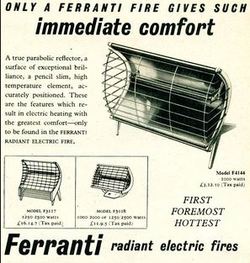
Domestic products
Ferranti did not forget his desire to improve the drudgery of life for the housewife
In 1910 production was started of various domestic products
Cookers (1910-14)
Fires (1910-14 and 1927-59)
Immersion Heaters (1929-59)
Irons (1910-14)
Water Heaters (1928-59)
Ferranti did not forget his desire to improve the drudgery of life for the housewife
In 1910 production was started of various domestic products
Cookers (1910-14)
Fires (1910-14 and 1927-59)
Immersion Heaters (1929-59)
Irons (1910-14)
Water Heaters (1928-59)
Dr Ferranti's All Electric House
With the move to Baslow Hall, Ferranti was at last able to practice what he preached and convert his home to the ideal all electric house - and farm.
A 25 hp oil engine driving a dynamo generated the current; a 6 ton hot water tank, with insulation 6 inches thick, provided heat storage. Lighting, cooking and heating were of course electrical, but the system of heating was of particular interest. All the principal rooms had concealed panels in the ceiling, consisting of hot water pipes embedded in the plaster; every room had one or more electric radiators.
In the gardens supply points were placed at convenient positions for plugging in an electric lawnmower, lighting the tennis court, etc
The small farm and dairy in which Mrs Ferranti, in particular, took great interest, had electric motors for the chaff-cutting and other machines.
Waste heat from thr engine was utilised for warming the garage and boosting the thermal storage system mentione above.
The laundry had its electric washer, ironer, and clothes dryer
In fact electricity was a universal servant, used in every possible way, including an ulta-violet ray apparatus;
Dr Ferranti's grand-daughter Valerie built a house in the north of Scotland almost half a century later. She used much the same heating system as he had done and it was considered - even then - to be very 'modern' and way ahead of anything as yet seen up there.
With the move to Baslow Hall, Ferranti was at last able to practice what he preached and convert his home to the ideal all electric house - and farm.
A 25 hp oil engine driving a dynamo generated the current; a 6 ton hot water tank, with insulation 6 inches thick, provided heat storage. Lighting, cooking and heating were of course electrical, but the system of heating was of particular interest. All the principal rooms had concealed panels in the ceiling, consisting of hot water pipes embedded in the plaster; every room had one or more electric radiators.
In the gardens supply points were placed at convenient positions for plugging in an electric lawnmower, lighting the tennis court, etc
The small farm and dairy in which Mrs Ferranti, in particular, took great interest, had electric motors for the chaff-cutting and other machines.
Waste heat from thr engine was utilised for warming the garage and boosting the thermal storage system mentione above.
The laundry had its electric washer, ironer, and clothes dryer
In fact electricity was a universal servant, used in every possible way, including an ulta-violet ray apparatus;
Dr Ferranti's grand-daughter Valerie built a house in the north of Scotland almost half a century later. She used much the same heating system as he had done and it was considered - even then - to be very 'modern' and way ahead of anything as yet seen up there.
Thermal Storage System
Like every other electrical engineer, Ferranti understood the still unsolved quest for a method to store electricity.
In his own house he had a thermal storage system. In this any excess power, in whatever form, was converted to heat as hot water and stored in a very well insulated container until required.
In later years his son Vincent Ferranti was involved in hydro schemes whereby any excess power was used to raise water to a high storage reservoir in the countryside. When neededd it could be released producing electricity as done by any standard hydro plant
Like every other electrical engineer, Ferranti understood the still unsolved quest for a method to store electricity.
In his own house he had a thermal storage system. In this any excess power, in whatever form, was converted to heat as hot water and stored in a very well insulated container until required.
In later years his son Vincent Ferranti was involved in hydro schemes whereby any excess power was used to raise water to a high storage reservoir in the countryside. When neededd it could be released producing electricity as done by any standard hydro plant
